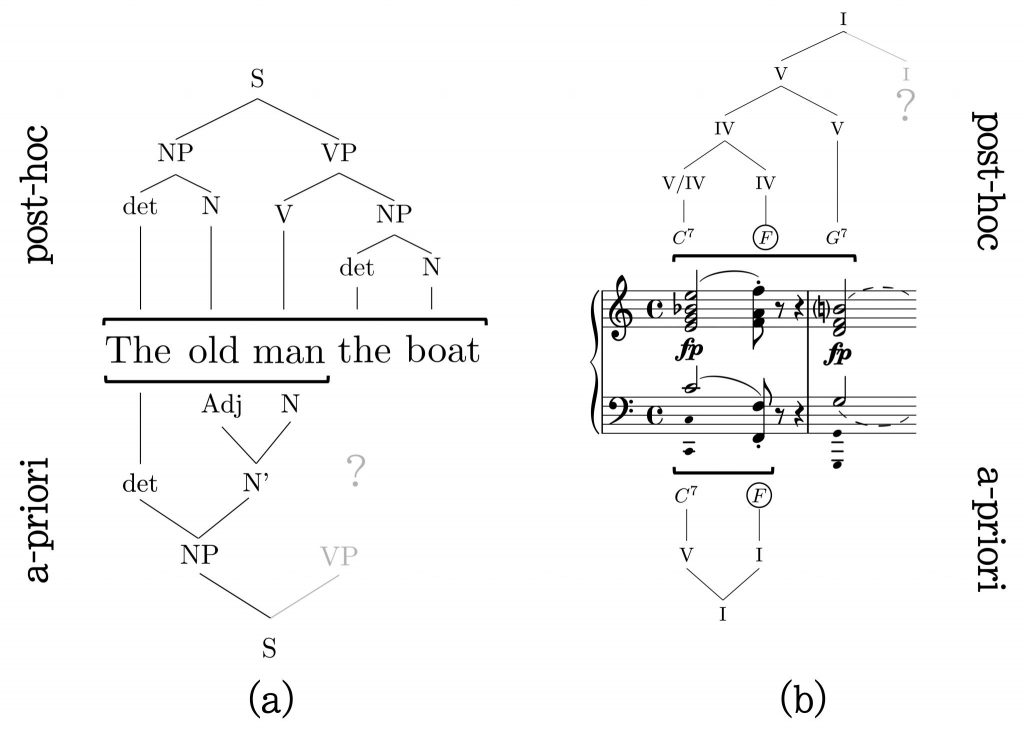
Our study on musical syntactic revision has just been published in Cognitive Science 46(7).
Syntactic revision is a well known phenomenon in language. While reading the first part of the garden-path sentence in Fig. 1a (“The old man…”), the most likely interpretation is to understand “man” as a noun and to expect a Verb Phrase to follow (a-priori interpretation, bottom). After exposure to the second part of the sentence (“… the boat”), the previously most likely interpretation is replaced by a different one, where “man” serves as a verb (post-hoc interpretation, top). This effect, that requires a retrospective update of interpretation after being misled by an ambiguous beginning, is called a garden-path effect.
Music theorists predict a similar effect to occur in music: the incipit of Beethoven 1st Symphony in Fig. 1b is a common example where the interpretation of the F major chord (circled) is first likely heard as a tonic, and then retrospectively reinterpreted as a subdominant. In our study, we showed for the first time explicit evidence of a garden-path effect in music, based on a set of tonally ambiguous melodies and a novel experimental paradigm.
These results demonstrate that abstract representations of musical structures are formed in the listeners’ mind, provided some familiarity with the musical idiom, and that such representations are prone to be revised retrospectively under similar conditions as in language. They also contribute to ongoing debates on the relationship between language and music as cognitive phenomena: is the observed musical garden-path effect supported by the same cognitive resources as its linguistic counterpart?
The full paper can be found in open access at https://doi.org/10.1111/cogs.13165
Acknowledgements
This project has received funding from the European Research Council (ERC) under the European Union’s Horizon 2020 research and innovation program under grant agreement No 760081-PMSB.